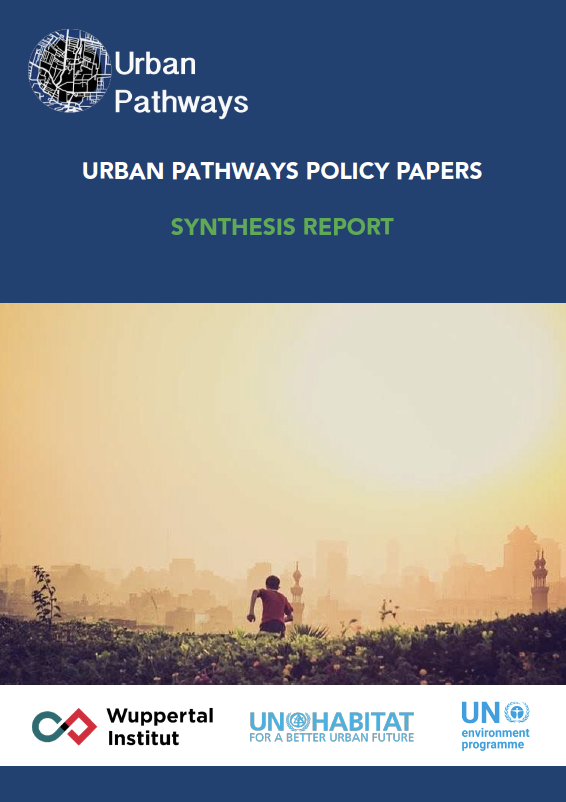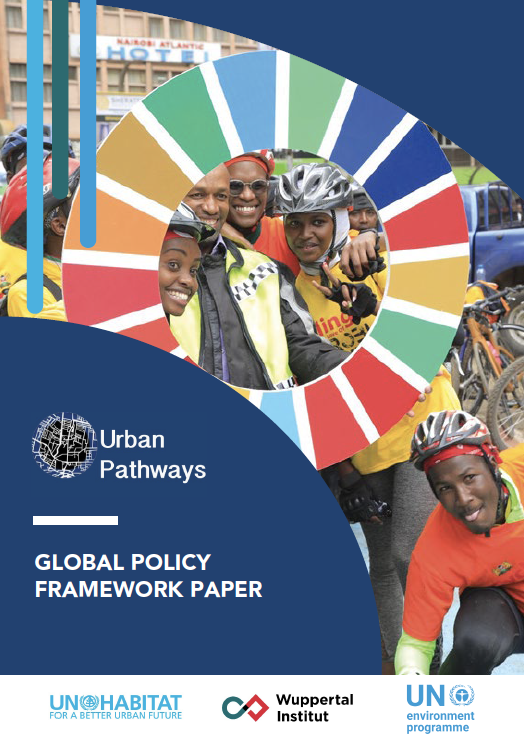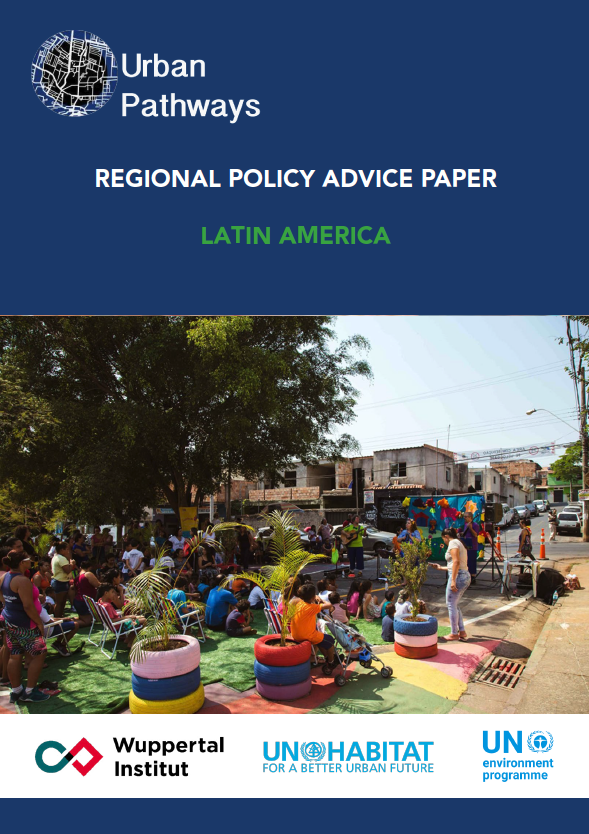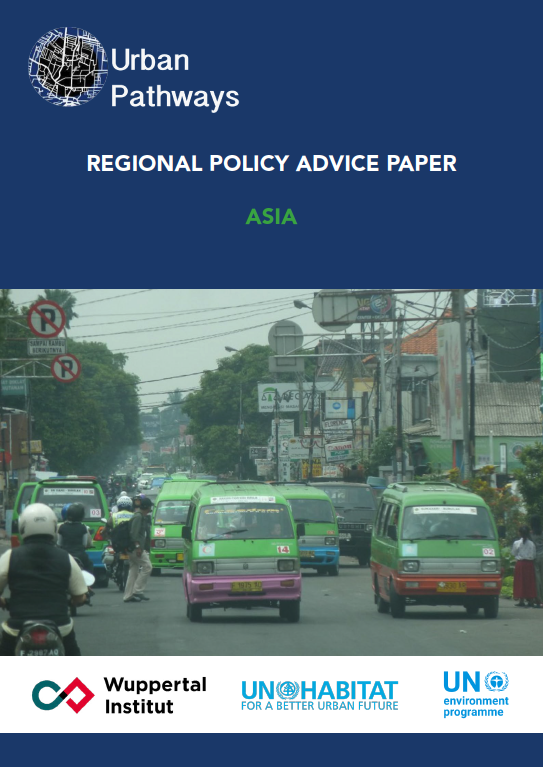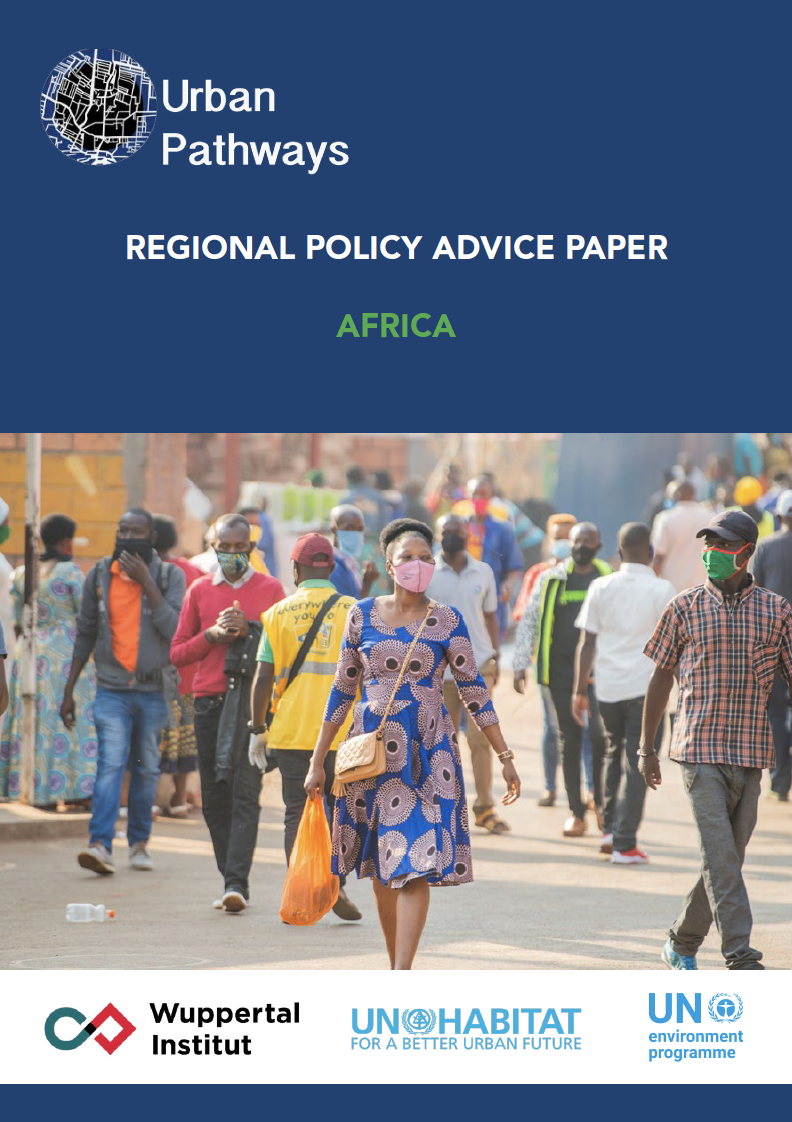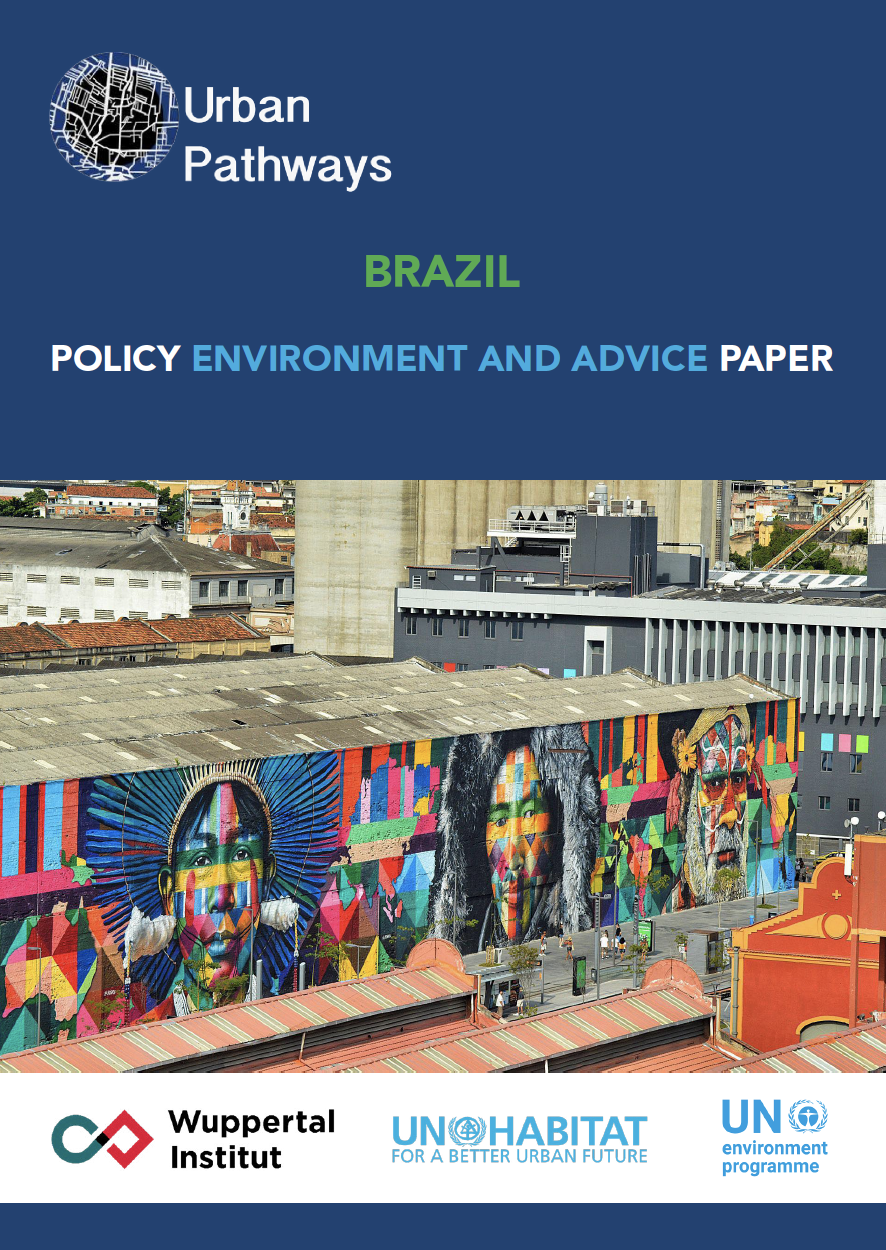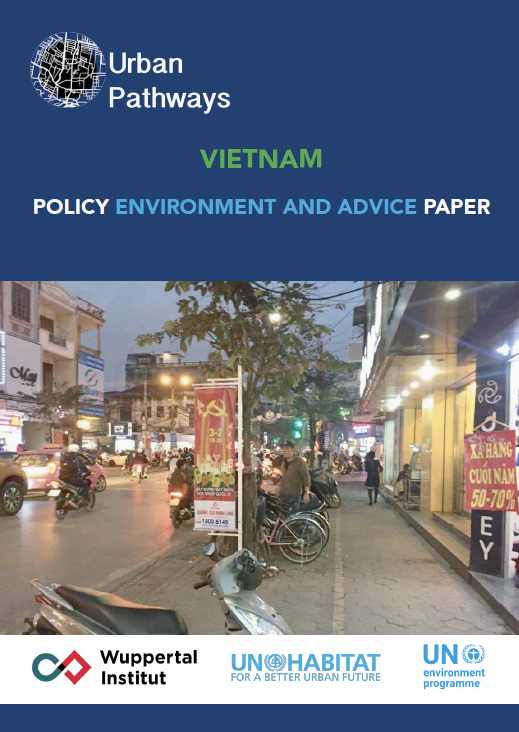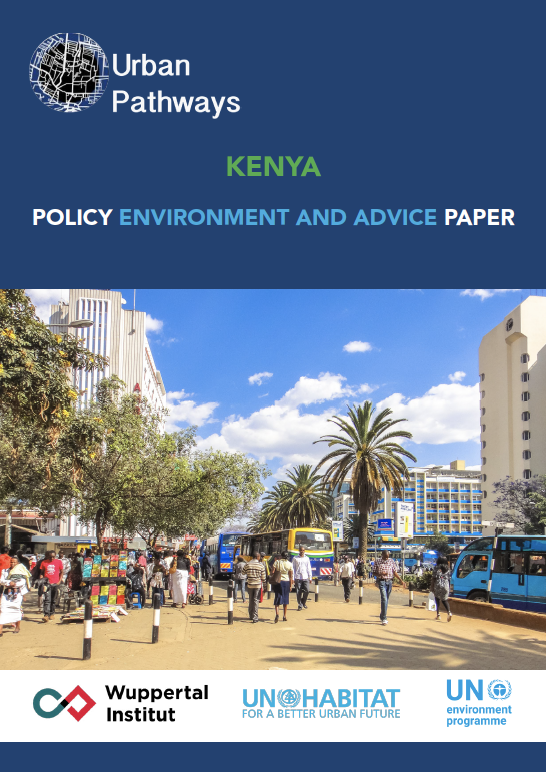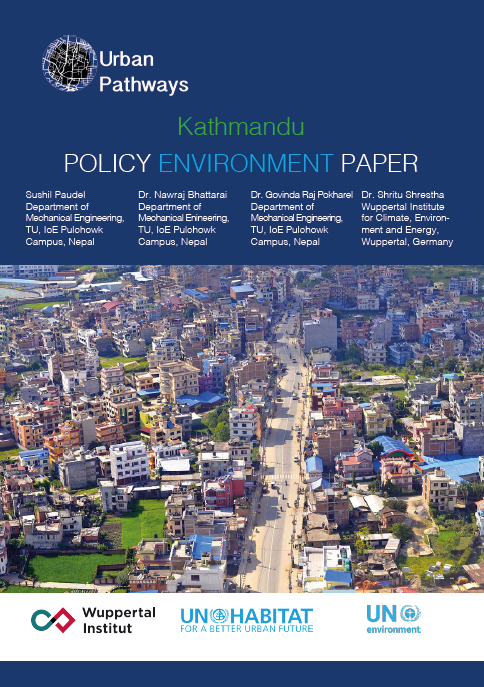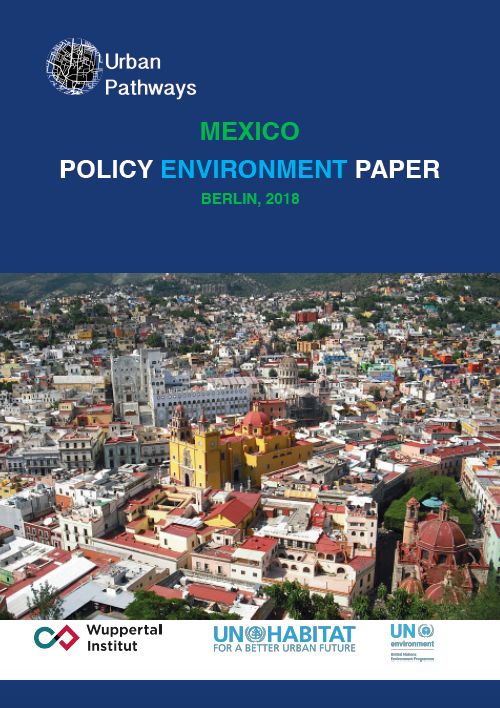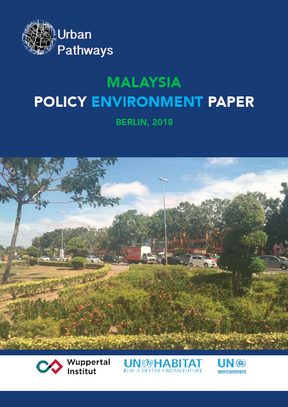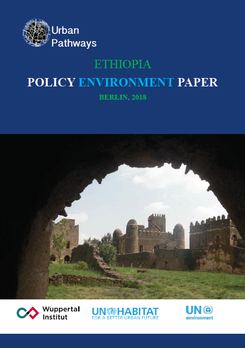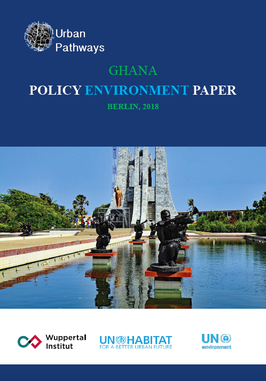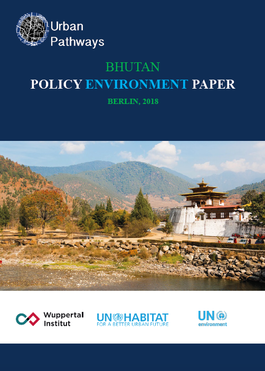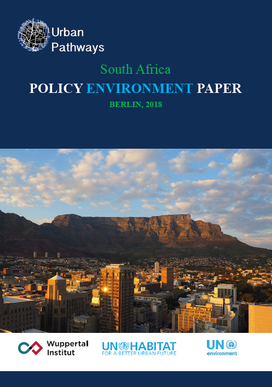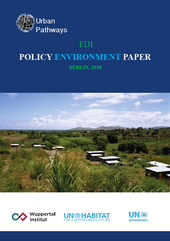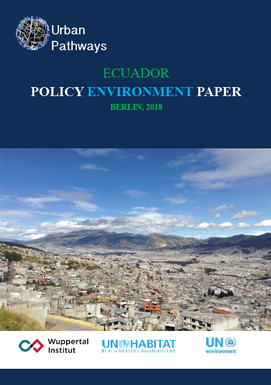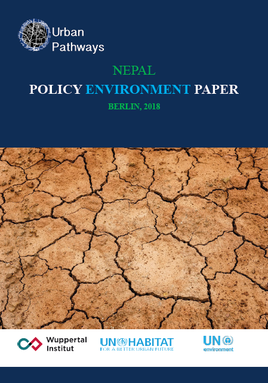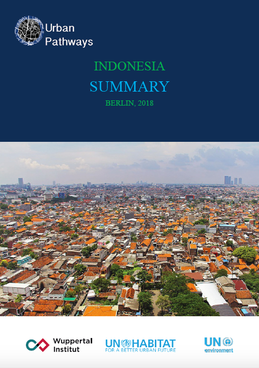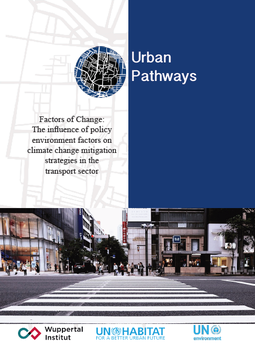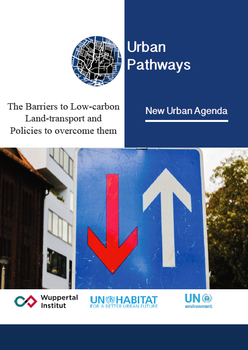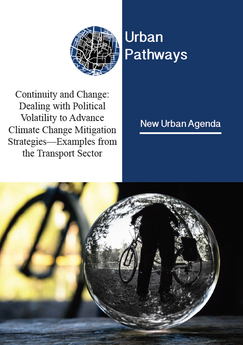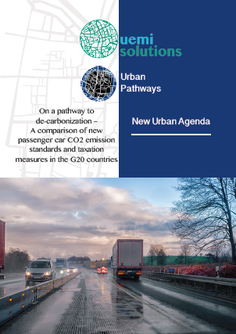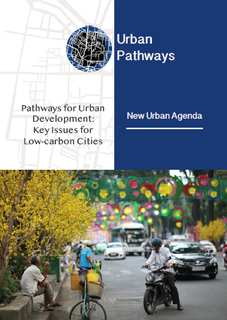|
Policy Papers
|
Project Concepts
|
Funding Solutions
|
|
Policy Environment and Advice Paper: Vietnam
In the context of formulating and implementing the Urban Pathways initiative for Vietnam, this paper analyses the administrative, legislative and political environment which influences policymaking at two levels of the government – the National and the Local/Provincial (Hai Phong). The paper outlines Vietnam’s GHG emission reduction targets, as well as the parallel ‘green growth’ strategies and action plans currently being implemented within three sectors – energy, transport and resource management. The paper also identifies key decisionmakers within the country’s public administration system. City example: Hai Phong |
|
Policy Environment and Advice Paper: Kenya
The United Nations’ New Urban Agenda (NUA) aims to set a new global standard for sustainable urban development, especially focusing on how we rethink our planning, management and living within our cities. The aim of this paper is to briefly review the policy environment in the Republic of Kenya in its development and implementation of the NUA with a specific focus on energy, mobility and resource (waste) management. This paper’s analysis conducts a overview of the policy making process and institutional make-up towards climate change adaptation and mitigation. City example: Nairobi |
|
Policy Environment and Advice Paper - India
Authors: Nikhil Chaudhary (UEMI), Adriana Silva (UEMI) In the context of the low-carbon Urban Pathways initiative in India, this paper analyses the administrative, legislative and political environment which influences policymaking at three tiers of the government: National, State (Kerala) and the pilot city (Kochi). Based on the NDC’s objective of maximising co-benefits to achieve India’s climate-related targets, the paper assesses how multi-level governance could build synergies between sustainable development programmes and policies within three sectors – energy, transport and resources. The paper also identifies relevant veto-players with decision-making capacities within respective public organisations. City example: Kochi |
|
Urban Policy Paper on "Evaluating the Effect of Policies, Vehicle Attributes and Charging Infrastructure on Electric Vehicles Diffusion in Kathmandu Valley, Nepal"
Abstract: This research presents a rigorous study of electric vehicles growth in Kathmandu Valley of Nepal based on the public response to various issues, prospects, and policies related to electrical vehicle growth in Nepal. Two surveys were carried out to take data from the public response to EVs, which are presented and explained in this paper. Study of public response to EV policies, both in current state and in utopian consumer preferred policy states has been carried out and compared in this research. Furthermore, the system dynamics analysis and EV growth projection of same two sets of data obtained from these surveys using two software tools, viz VENSIM-PLE and MATLAB are done and presented herewith. In addition to this, the change in level of CO2 emission with EV growth, their sensitivity analysis to different related variables, etc are also included in this paper. Summing up, this paper shows a projection of EV growth in Kathmandu valley under different policy status and the related effects of EV growth using System Dynamics programming and simulation tools for result validation. |
|
Policy Environment Paper: Mexico
Mexico is the 11th most populated country in the world with an estimated population of 124,574,795 inhabitants and an annual population growth rate of 1.12% (CIA, 2018). The country is the 10th largest global GHG emitter accounting for 1.68% of global emissions. Nevertheless, it is the first developing country to pass a general Climate Change law and has voluntarily pledged $10 million to the Green Climate Fund. In 2010, its national emissions in units of carbon dioxide equivalent (CO2-eq) amounted to 748,252.2 Gg, with an annual average growth rate of 1.5% (CICC, 2012). According to the Climate Change Performance Index (CCPI, 2018), the country is performing relatively well (fig. 3) in the policy category, due to the actions taken by the government, such as the reduction of subsidies to fossil fuels, which leads to a high rating. However, its low rated 2030 target for clean energy and its lack of compliance with the road below 2°C makes Mexico one of the worst performing countries in the renewable energy section. |
|
Policy Environment Paper: Malaysia
This paper aims to identify policy measures in line with the United Nations’ New Urban Agenda and in the context of the respective Nationally Determined Contributions of Malaysia (MY). This paper reviews current developments to mitigate and adapt to Greenhouse Gas (GHG) emissions, and focuses on national policies and implementation strategies of the Malaysian government in keeping with the Paris Agreement on Climate Change (2015). A brief overview of the Melaka’s strategies to accordingly mitigate and adapt is conducted by reviewing the sectors of transport, energy and resource sector. City example: Melaka |
|
Policy Environment Paper: Ethiopia
This paper highlights policy measures adopted by the Ethiopian government in delivering on its Intended Nationally Determined Contributions (INDC) communicated to the United Nations Framework Convention on Climate Change (UNFCCC). The paper reviews mitigation and adaptation efforts of the government to reduce greenhouse gas emissions and address climate change impacts in the context of the New Urban Agenda. The paper also presents an overview of the transport, energy and waste sectors and highlights policy strategies and actions implemented by the city of Addis Ababa in the promotion of sustainable and environmentally-sound development. City example: Addis Abeba |
|
Policy Environment Paper: Ghana
This paper highlights policy measures in line with Ghana’s Intended Nationally Determined Contributions as communicated to the United Nations Framework Convention on Climate Change (UNFCCC) in its obligations under the convention. The paper also reviews the government’s efforts to keep up with objectives of mitigating greenhouse gas emissions and adapting to climate change effects in the context of the New Urban Agenda. Focus is given to the transport, energy and waste sectors with briefs on some policy strategies undertaken in the capital city of Accra and at the national level. City example: Accra |
|
Policy Environment Paper: Bhutan
This paper aims to identify policy measures in line with the United Nation’s New Urban Agenda and in the context of the respective Intended Nationally Determined Contributions of the Kingdom of Bhutan (Bhutan). This paper reviews current developments in Bhutan to mitigate and adapt to greenhouse gas (GHG) emissions, by focusing on the country’s national policies and implementation strategies in keeping with the Paris Agreement on Climate Change (2015). A brief analysis of Thimphu’s strategies to accordingly mitigate and adapt is conducted by reviewing the sectors of energy, transport and resource/waste management. City example: Thimphu |
|
Policy Environment Paper: South Africa
This paper aims to identify policy measures in line with the UN’s New Urban Agenda and in the context of the respective Nationally Determined Contributions of the Republic of South Africa (SA). This paper reviews current developments to mitigate and adapt to Greenhouse Gas (GHG) emissions and focuses on national policies and implementation strategies of the South African government, in keeping with the Paris Agreement on Climate Change (2015). A brief overview of the City of Cape Town’s strategies to accordingly mitigate and adapt is conducted by reviewing the sectors of transport, energy and resources. City example: Cape Town |
|
Policy Environment Paper: Fiji
This paper reviews policy measures associated with Fiji’s Intended Nationally Determined Contributions, which were communicated to the United Nations Framework Convention on Climate Change (UNFCCC) in 2015. The paper highlights the Fijian government’s efforts to mitigate greenhouse gas emissions and adapt to climate change impacts in the context of the New Urban Agenda. The paper also presents an overview of the transport, energy and waste sectors and reviews policy strategies and actions implemented by the city of Suva in the bid to promote environmentally sustainable development. City example: Suva |
|
Policy Environment Paper: Ecuador
Ecuador, responsible for 0.15% of the world GHG emissions, aims to reduce its energy-related emissions by up to 45.8% depending on the availability of resources and the support of the international community. In order to achieve this goal, Ecuador has started to transform its energy matrix with the construction of 8 hydropower plants. In the future, Ecuador plans to produce 80% of its electricity with hydropower, 16% with thermoelectricity and 4% with other renewable sources. In terms of transport, which accounts for 21% of the national emissions, Ecuador launched the Programme RENOVA in 2008 to replace cars older than 10 years. This includes incentives for the purchase of electric and hybrid vehicles. Concerning public transport, Quito and Cuenca lead the way with the construction of the first subway line and the first tramline, respectively. Finally, in 2010 Ecuador implemented the National Programme of Integrated Solid Waste Management, through which it supports the implementation of technologies to capture and use the biogas from municipal landfills. City example: Cuenca |
|
Policy Environment Paper: Nepal
This paper aims to identify policy measures in line with the UN’s New Urban Agenda and in the context of the respective Nationally Determined Contributions of Nepal. This paper reviews current developments of Nepal to mitigate and adapt to greenhouse gas (GHG) emissions, by focusing on the country’s national policies and implementation strategies in keeping with the Paris Agreement on Climate Change (2015). A brief analysis of the Kathmandu Valley’s strategies to accordingly mitigate and adapt is conducted by reviewing the sectors of energy, transport and resource/waste management. City example: Kathmandu |
|
Indonesia
This paper will help identifying policy measures in line with the New Urban Agenda and in the context of the respective Nationally Determined Contributions for Indonesia. The project will take a holistic approach and optimise the synergies between transport, energy and resource management operations. |
|
Factors of Change: The influence of policy environment factors on climate change mitigation strategies in the transport sector
There is a large potential for cost-effective solutions to reduce greenhouse gas emissions and to improve the sustainability of the transport sector that is yet unexploited. Considering the cost-effectiveness and the potential for co-benefits, it is hard to understand why energy gains and mitigation action in the transport sector is still lagging behind its potential. Particularly interesting is the fact that there is substantial difference among countries with relatively similar economic performances, such as the OECD countries in the development of their transport CO2 emission over the past thirty years despite the fact that these countries had relatively similar access to efficient technologies and vehicles. |
|
The Barriers to Low-carbon Land-transport and Policies to overcome them
Shifting to a low-carbon development pathway requires substantial efforts for the transport sector. Electric mobility provides the opportunity to lower harmful emissions, improve energy security and increase economic productivity (Greene 2009). There is an immediate need to move towards low-carbon modes and energy carriers in the transport sector from an economic, societal and environmental perspective. Doing so harbours considerable potential for co-benefits if the technology is advanced enough to be introduced cost-effectively (Leinert et al. 2013; Viguié and Hallegatte 2012). Emobility technologies are, however, substantially underutilised; while some countries have made noticeable progress in this area, others have largely failed to do so (IEA 2015). There are split incentives between societal and individual benefits that create a collective action problem, which inhibits optimal outcomes in this area. This paper will explore those barriers and emphasise the need for policy intervention. |
|
Continuity and Change: Dealing with Political Volatility to Advance Climate Change Mitigation Strategies
Examples from the Transport Sector There is a large potential for cost-effective solutions to reduce greenhouse gas emissions and to improve the sustainability of the transport sector that is yet unexploited. This study aims to explore some well-established political science theories on the particular example of climate change mitigation in the transport sector, in order to identify some of the factors that could help explain the varying success of policies and strategies in this sector. The analysis suggests that institutional arrangements that contribute to consensus building in the political process provide a high level of political and policy stability, which is vital to long-term changes in energy end-use sectors that rely on long-term investments. |
|
On a Pathway to Decarbonization
A comparison of new passenger car CO2 emission standards and taxation measures in the G20 countries Considering the role of transport for a 1.5 Degree stabilization pathway and the importance of light-duty vehicle fuel efficiency within that, it is important to understand the key elements of a policy package to shape the energy efficiency of the vehicle fleet. This paper presents an analysis focusing on three types of policy measures: (1) CO2 emission standards for new vehicles, (2) vehicle taxation directly and indirectly based on CO2 emission levels, and (3) fuel taxation. The paper compares the policies in the G20 economies and estimates the financial impact of those policies using the example of a Ford Focus vehicle model. |
|
Pathways for Urban Development
Key Issues for Low-carbon Cities Urbanisation is increasing rapidly, particularly in developing and emerging economies, which creates great opportunities but also poses significant challenges. Cities currently account for about 70 percent of energy consumption and about 80 percent of energy related Greenhouse Gas Emissions, while only covering 2 percent of the earth´s land. The integration of urban energy, transport and resources sectors is vital for the success of global climate change mitigation efforts (UN 2016a). |
|
|
Urban Services and Technology
The New Urban Agenda was unanimously adopted at the United Nations Conference on Housing and Sustainable Urban Development (Habitat III) in Quito, Ecuador on 20 October 2016. In December 2016, during the sixty-eighth plenary session of the seventy-first General Assembly, all United Nations Member States endorsed the New Urban Agenda and committed to work together towards a paradigm shift in the way we plan, build, and manage our cities. |


